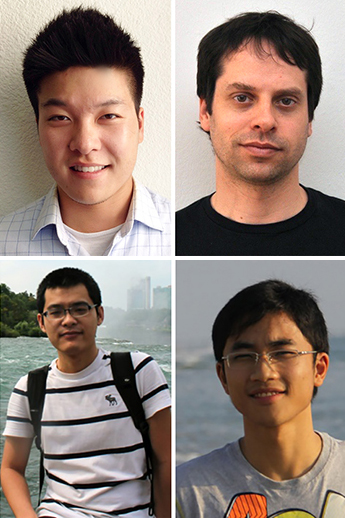
At this year's retreat Alexander Hsieh, Rotem Rubinstein, Jinzhou Yuan, and Jiguang Wang (clockwise from top left) were named winners in the Best Poster Competition.
On September 15, 2016, members of the Columbia University Department of Systems Biology gathered in Tarrytown, New York for the Department’s annual retreat. Although the tranquil setting overlooking the Hudson River was familiar, the event’s timing was new, taking place for the first time at the beginning of the academic year to enable first-year graduate students to become acquainted with the Department as they begin their studies. With a full day of scientific talks, a poster session, and ample time for informal conversation, the retreat provided an up-to-date survey of the diverse research taking place in the Department's laboratories.
In introductory remarks, Department Chair Andrea Califano celebrated the retreat as an important annual meeting that provides “a chance to bring our heads together and think about what we are as a community.” He then gave a brief update on recent developments in the Department — including the interdisciplinary and collaborative nature of its research, its growing emphasis on technology development, the high publishing productivity among its investigators, and its successful pipeline of funded grants.
Among these is a new U54 grant that has enabled the creation of the Center for Cancer Systems Therapeutics (CaST). Shannon Hughes, a program officer in the National Cancer Institute’s Division of Cancer Biology, followed Dr. Califano at the podium to introduce the new Cancer Systems Biology Consortium, of which CaST is one of four founding centers.
Following her remarks, Peter Sims, who recently became director of the Department of Systems Biology’s Graduate Program, discussed recent changes in the systems biology PhD track’s curriculum and requirements and the launch of a new faculty research seminar.